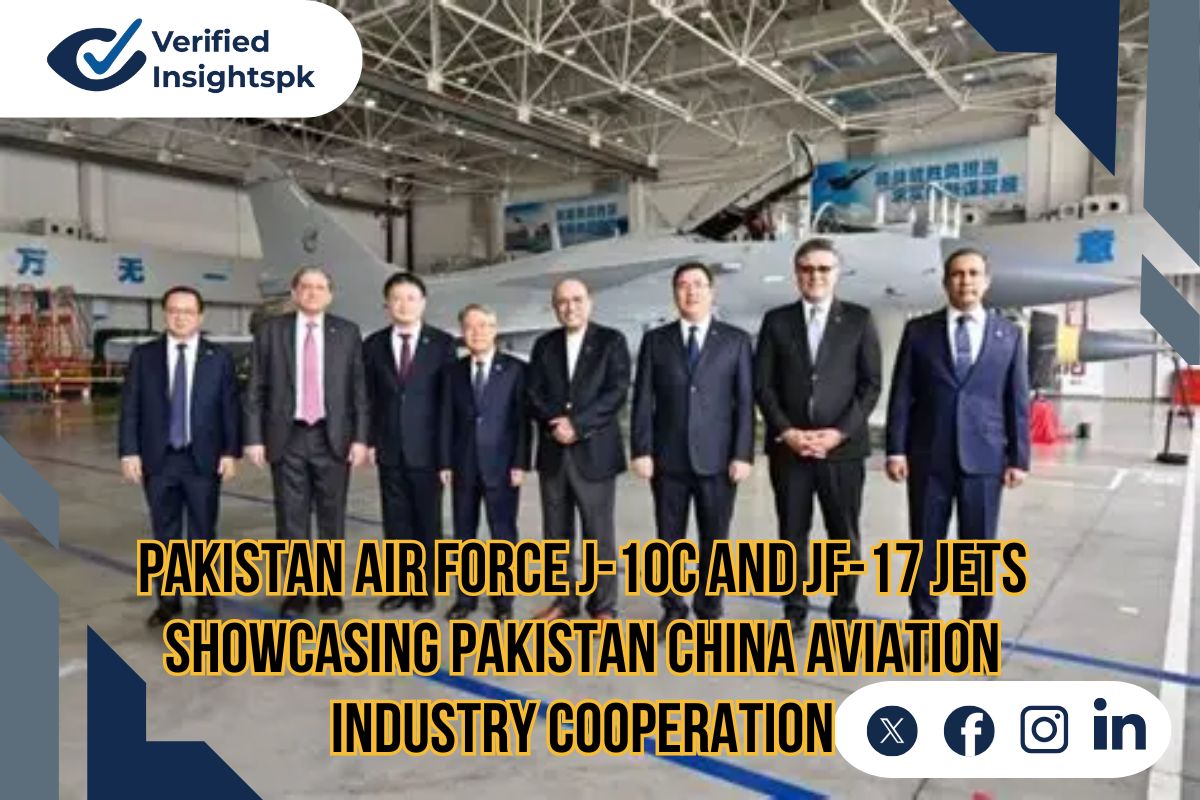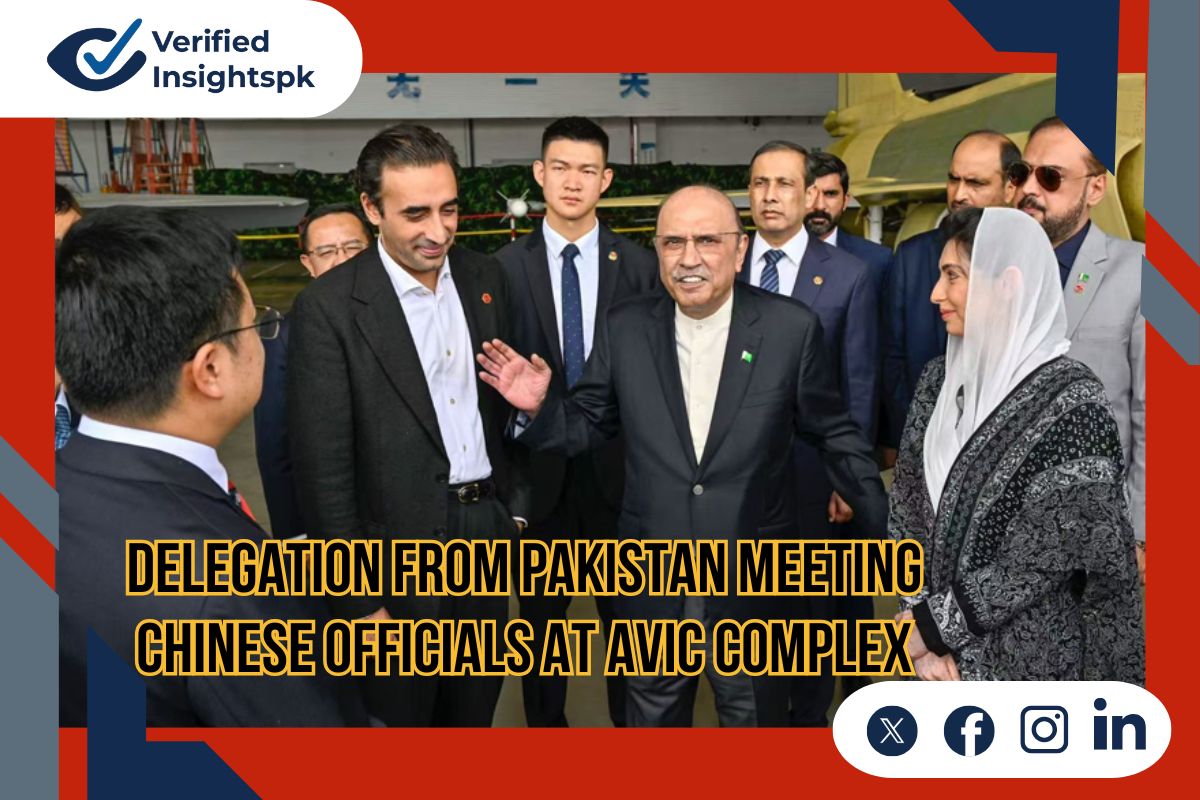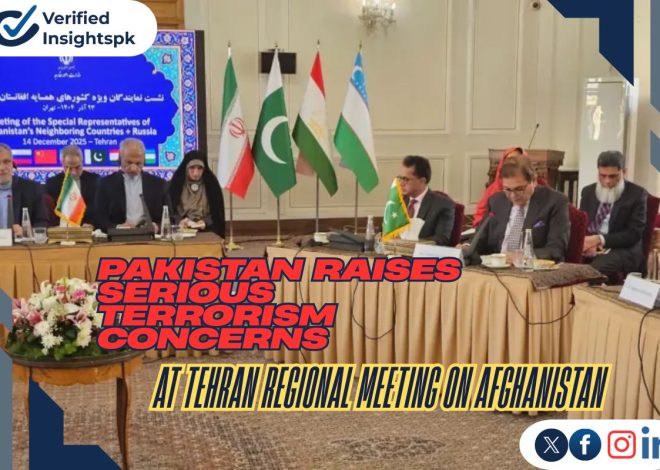
Pakistan China Defence Collaboration Gathers Momentum During Zardari’s Visit
Pakistan and China have once again demonstrated the strength of their all-weather friendship as President Asif Ali Zardari began his high-profile visit to China this week. One of the key highlights of his trip was a tour of the Aviation Industry Corporation of China (AVIC), where he reaffirmed that Pakistan China defence collaboration will continue to expand, particularly in the areas of defence production and aviation.
This visit underlines not only the historic ties between Islamabad and Beijing but also their shared vision of advancing military technology, boosting air power, and ensuring regional security.
Zardari’s Visit to AVIC for Pakistan China defence collaboration

During his tour, Asif Ali Zardari visits AVIC facilities, where he met with engineers, scientists, and senior management of China’s aerospace and defence giant. The president was given an extensive briefing on AVIC Pakistan aviation cooperation, which includes projects ranging from fighter jet development to uncrewed aerial vehicles and integrated command-and-control systems.
The president praised AVIC as a “symbol of China’s technological excellence and a reflection of the deep and trusted bond between the two nations.” His remarks highlighted the importance of Pakistan China aviation industry cooperation, which has already delivered landmark achievements like the joint development of the JF-17 Thunder fighter jet.
Strategic Partnership in Defence Production
The Pakistan-China strategic partnership in defence production has been a cornerstone of bilateral relations for decades. By jointly producing platforms such as the J-10 and JF-17 through Pakistan-China production, both countries have not only strengthened the Pakistan Air Force’s development and China nexus but have also set a model for international defence cooperation.
The JF-17 Thunder program, in particular, has been a success story. Produced in collaboration with AVIC, the aircraft has enhanced Pakistan’s aerial combat capability while offering an affordable, locally maintained platform for the Pakistan Air Force. The recent induction of J-10C fighter jets, part of China exports of fighter jets to Pakistan, further demonstrates how aviation cooperation is evolving into a long-term, mutually beneficial partnership.
Military Aviation Collaboration Expands
Zardari’s tour also reinforced the growing Pakistan military aviation collaboration that extends beyond fighter jets. Discussions included work on drones, fifth-generation aircraft technology, and advanced radar and surveillance systems.
According to officials, this cooperation is not only about procurement but also about Pakistan China aerospace technology transfer, which helps Pakistan develop indigenous capabilities. By equipping local engineers and technicians with cutting-edge skills, both nations ensure that the cooperation produces lasting benefits rather than short-term gains.
Pakistan’s Defence Production with China

The president stressed that Pakistan defence production with China has helped modernize the armed forces and improve self-reliance in key areas. Projects like the co-production of the JF-17 have created jobs, advanced technical know-how, and positioned Pakistan as an emerging player in the defence production industry.
At the same time, China views this collaboration as a way to deepen trust, expand markets for its defence products, and consolidate its role as Pakistan’s most reliable partner in both peace and conflict.
A Historic Visit
However, we cannot forget the significance of this visit at all. For the first time, a foreign head of state visited the AVIC complex, marking a historic moment for bilateral relations. This Pakistan president China defence visit sent a strong message to the international community about the depth of cooperation between the two nations.
President Zardari was accompanied by PPP Chairman Bilawal Bhutto-Zardari, MNA Aseefa Bhutto-Zardari, senior officials, and Pakistan’s ambassador to China. The presence of key political figures underscored the government’s full commitment to expanding Pakistan China military aviation news and strengthening defence ties.
Strategic Cooperation in 2025
Observers note that the visit comes at a time when both countries are seeking to solidify their roles in regional stability. The Pakistan China strategic cooperation 2025 framework is expected to include not just defence and aviation projects but also economic, technological, and connectivity initiatives.
This comprehensive approach ensures that military cooperation is aligned with broader strategic goals, making the partnership future-oriented and resilient to regional challenges.
Aviation & Defence Technology Partnership
The ongoing Aviation & Defence Technology Partnership between Pakistan and China is also a response to evolving regional security dynamics. With increasing tensions in South Asia, Pakistan needs advanced technology to maintain deterrence and safeguard its sovereignty. China, on the other hand, sees Pakistan as a key partner in promoting stability and balancing external pressures in the region.
Through joint projects, both countries are not just exchanging technology but building a framework for long-term cooperation that blends military requirements with industrial growth.
Conclusion
President Zardari’s visit to AVIC was more than a symbolic gesture; it was a reaffirmation of Pakistan’s strategic choice to stand alongside China in defence and aviation cooperation. From J-10, JF-17 Pakistan-China production to cutting-edge drone technology and future-generation fighters, the partnership is expanding in scope and significance.
For Pakistan, the dividends are clear: a stronger air force, greater self-reliance, and access to advanced technologies. For China, the collaboration strengthens its role as a trusted partner and demonstrates the effectiveness of its defence industry on the global stage.
As both nations look ahead, the Pakistan China defence collaboration is set to remain a cornerstone of their relationship, shaping not only the skies of South Asia but also the balance of power in the wider region.










